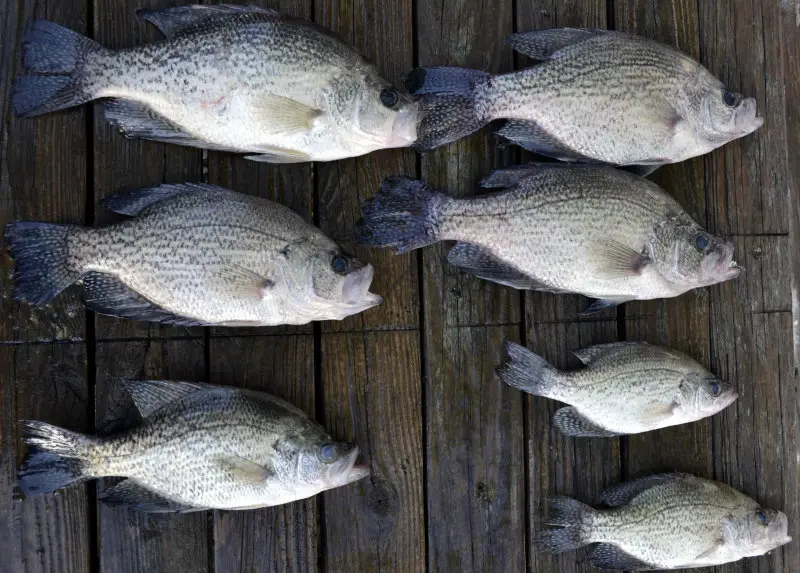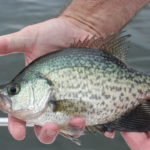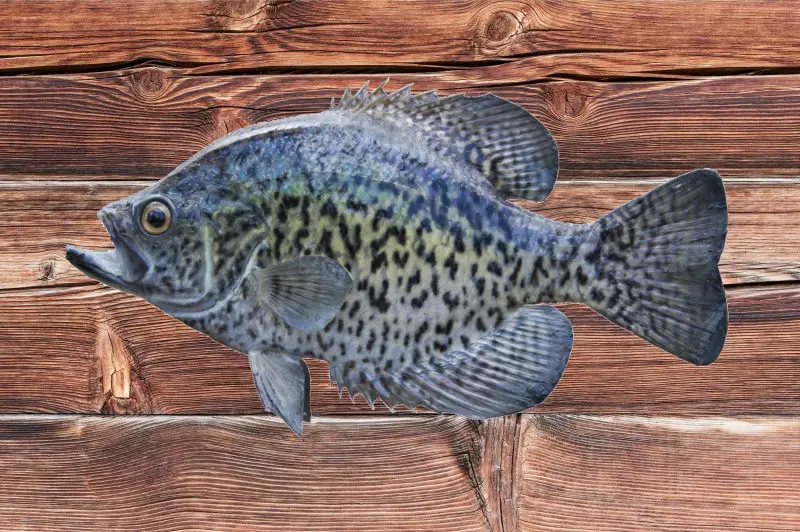Black and white crappies are widespread across the United States because of their delicious taste and abundance in many lakes. If you go crappie fishing, you will find crappies of many sizes, so you might wonder what size you should keep.
You should only keep crappies that are 9 inches (23 centimeters) or longer. Crappies shorter than this won’t have much meat on them, and you want to avoid catching immature fish before they’ve had time to grow and reproduce. The size of crappies available will also depend on the lake where you fish.
Knowing what size crappie you should keep is essential if you’re a frequent crappie fisher. To learn more about this critical topic, keep reading this article!
What Is the Best Crappie Size?
You can easily catch crappies as long as you have an appropriate rod and some other essential equipment, but you need to make sure the ones you catch are the best size!
In most cases, the best crappie size is between 9 and 12 inches (23 and 30 centimeters). Crappies within this size range are fully grown and will give you plenty of meat to cook and eat. However, as I’ve mentioned above, crappie size will vary according to the lake where you fish.
That’s because some lakes may have crappies with an average size of 7 inches (18 centimeters), while others may have crappies with an average length of 12 inches (30 centimeters). If most crappies in the lake are 7 inches (18 centimeters), it would be acceptable to keep those.
If you catch a crappie that’s too small, put it back in the water and try again.
Each State Has Different Laws Relating to Crappie Size
It’s also essential to understand the laws of your state when wondering what size crappie you should keep. Texas laws may differ from those in Louisiana. And on top of that, the lakes within states may have even more specific regulations.
Below I’ll discuss the crappie size laws and regulations of a few different states and lakes:
- Texas. The minimum size limit for crappies in Texas is 10 inches (25 centimeters), so you can keep crappies of that size or above. Additionally, the daily bag limit (amount of fish you can keep each day) is 25 crappies.
- Louisiana. In Louisiana, Eagle Lake has a minimum size regulation of 11 inches (28 centimeters) for crappies. Plus, you can keep 30 crappies each day. If you catch a crappie 11 inches (28 centimeters) or longer in Eagle Lake, Louisiana, you should keep it.
- Missouri. In Missouri, there are different lakes with varying crappie size regulations. For example, the minimum size in Bull Shoals Lake is 10 inches (25 centimeters), and the minimum size in Lake of the Ozarks is 9 inches (23 centimeters). So, you should only keep crappies that are at least 9 inches (23 centimeters) long if fishing in the Ozarks.
- California. You can find crappies in many lakes across California. Some lakes have fewer rules in California. For example, there is no minimum size for crappies in Silverwood Lake. Therefore, you can legally keep any size crappie. Ideally, you’d still want to avoid keeping crappies smaller than 9 inches (23 centimeters) if you can help it.
Here’s Why You Can’t Just Keep Crappies of Any Size
If you’re new to fishing, you might be wondering why there are size limits on crappies that you can keep. There are plenty of crappies across lakes in the United States, so why does it matter so much?
Well, fishing restrictions are mostly there to protect the ecosystem. Below, I’ll discuss in more detail why you can’t keep crappies of any size and why it’s generally best to stick with fish over 9 or 10 inches (23 and 25 centimeters).
To Abide by the Laws
First and foremost, different laws state what size crappie you can catch (as discussed in the earlier section) depending on your region. If you don’t follow the rules, you are breaking the law and may get fined or even worse!
If you want to stay out of trouble with the law, familiarize yourself with your state’s rules and, more specifically, the rules of the lake you fish at.
Fishing laws are in place for good reasons, one being to conserve the species as much as possible. So, always check the crappie size requirements at your specific location before keeping any fish you catch.
To Protect the Ecosystem
Another reason you can’t keep crappies of any size (in most places) is because it could damage the ecosystem. Catching crappies that are too small and immature can affect the population of fish in the area over time. By catching the small, immature crappies, you’re not giving them enough time to grow and reproduce.
It’s good to catch crappies that are 9 to 12 inches (23 to 30 centimeters) long because they’re mature and more likely to have already reproduced. So it won’t be as damaging to the ecosystem.
And while the size rules are essential, the daily limit rules are also important. Catching too much of any size crappie (whether it’s a tiny baby fish or large adult fish) will harm the ecosystem.
For Practical Reasons
While there are laws to abide by and ecosystems to protect, you must also consider the practicality of your actions. Catching a small 5-inch (13-centimeter) crappie won’t be very useful because you won’t get as much meat from it as you would from a larger 11-inch (28-centimeter) one.
You need to consider the effort it takes to fillet your crappies and whether a small one is worth this much work. In most cases, anything smaller than 9 inches (23 centimeters) isn’t worth the time or effort.
Mounting Crappie
If you are keeping crappie for mounting, you will want to make sure your trophy fish is worth the cost and effort. A good starting range for crappie mounts is 13 inches or larger.
Anything less than 13 inches falls into an average size and just isn’t impressive. Also, the cost to process a crappie mount will be similar regardless of the size.
Conclusion
You should only keep crappies that are at least 9 inches (23 centimeters) or longer. Anything smaller than this is likely too small and immature to be worth the trouble and probably illegal.
However, some lakes may have smaller fish on average. In this case, it would be OK to keep smaller crappies (as long as it’s legal). Always check the laws and regulations at your location to ensure you’re not breaking any rules regarding crappie size.
Crappies between 9 and 12 inches (23 and 30 centimeters) are best because they’re fully grown adults with plenty of meat.





